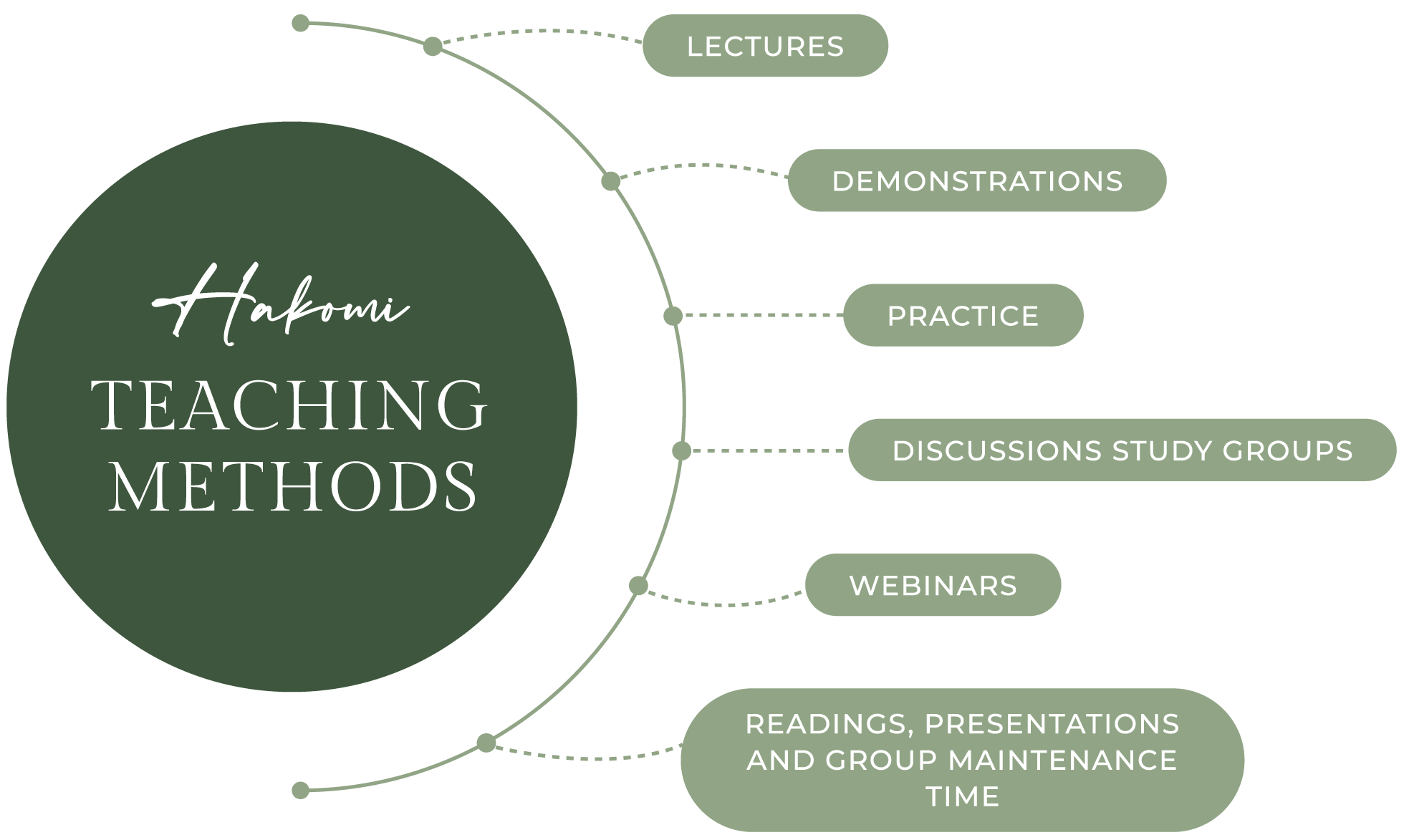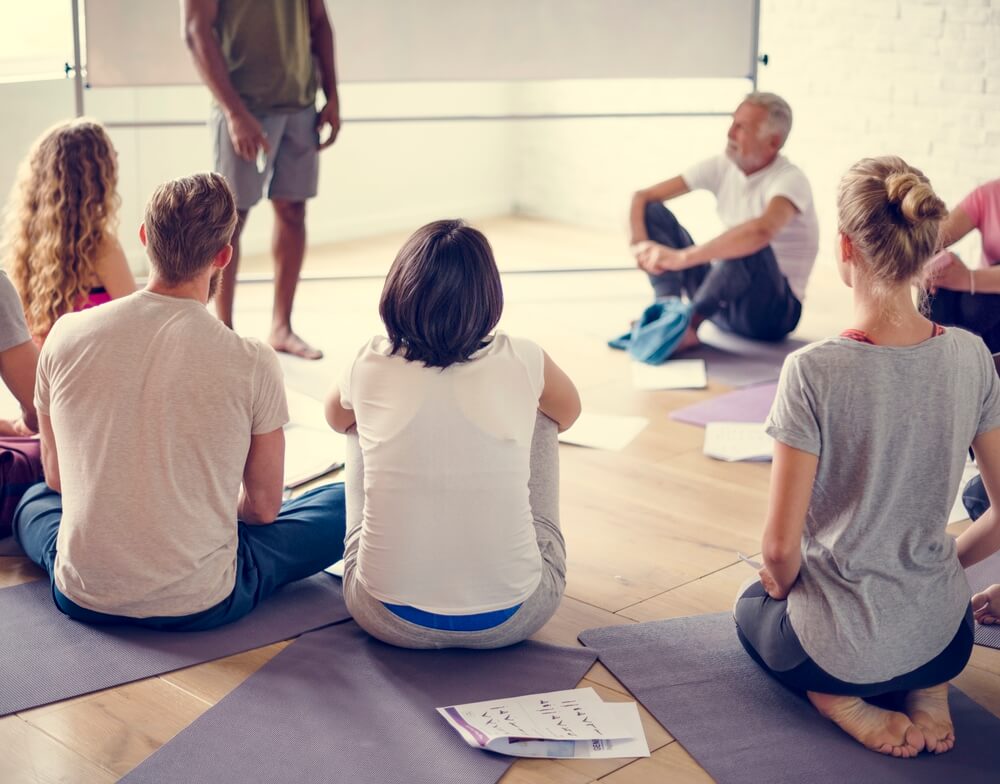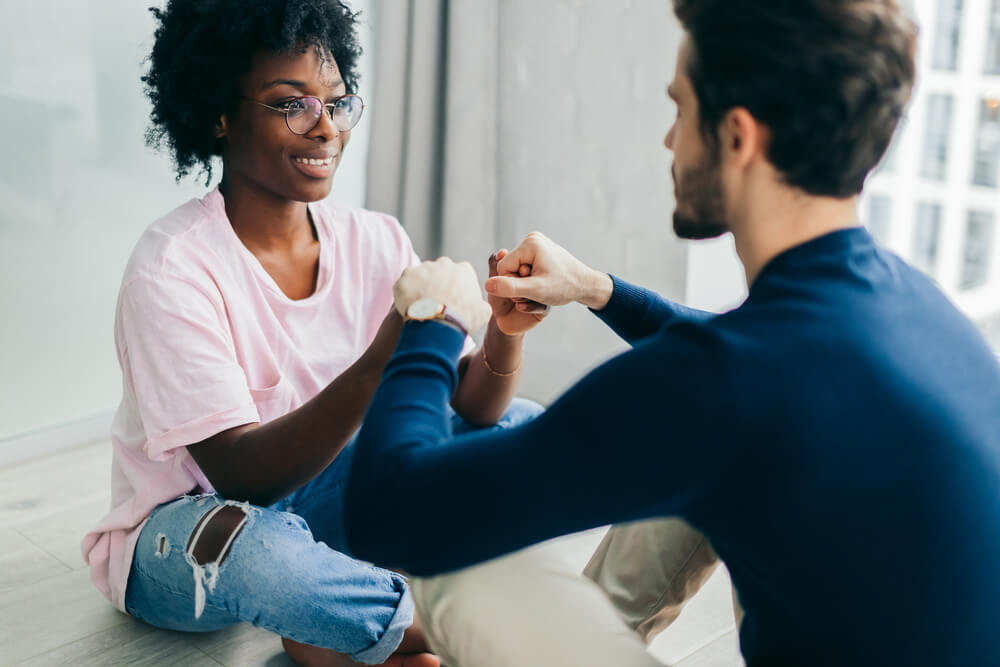How We Teach
Whole-Person Learning
The first concern of the Hakomi faculty is to encourage our students to understand, embrace, and adhere to the Hakomi Principles, which Ron Kurtz described as the “theoretical underpinnings of the work.” This task requires a heartfelt, long-term commitment to personal and professional growth for participants.
Toward that end, the curriculum incorporates kinesthetic, visual, and auditory teaching modalities that engage the body and mind of our students to support whole-person learning. Both in-person and virtual programs are dynamic and interactive, combining lectures with experiential activities, demonstrations, practice sessions, and inner exploration of how to “be” a therapist.

Whole-Person Learning
The first concern of the Hakomi faculty is to encourage our students to understand, embrace, and adhere to the Hakomi Principles, which Ron Kurtz described as the “theoretical underpinnings of the work.” This task requires a heartfelt, long-term commitment to personal and professional growth for participants.
Toward that end, the curriculum incorporates kinesthetic, visual, and auditory teaching modalities that engage the body and mind of our students to support whole-person learning. Both in-person and virtual programs are dynamic and interactive, combining lectures with experiential activities, demonstrations, practice sessions, and inner exploration of how to “be” a therapist.


A wonderful experience that will shape the rest of my life.

Demonstrations and
Practice Sessions
Hakomi is part art and part science.
We have a theoretical framework for understanding transformation, informed by neuroscience and general systems theory. We also have a delineated methodology that one can learn conceptually through lectures and books. However, to master the art of Hakomi, you must see the work demonstrated by a skilled practitioner, practice regularly and receive ongoing feedback. For this reason, our professional programs are highly experiential.


Online programs use breakout rooms for paired and small group activities.
Staff floats amongst the breakout rooms to supervise online practice sessions or joins groups during in-person programs. We frequently divide the students into study groups to discuss Hakomi topics and practice between training segments. Students must also conduct 1:1 live or virtual practice sessions outside class.
Demos and practice sessions address real issues for the "client."
Demos are often touching and stirring, creating a resonant field amongst the group while showing how to use Hakomi with different psychological processes.
For practice sessions, students alternate between “client” and “therapist,” which requires emotional agility and a strong capacity for self-regulation. Assistants are on-hand to aid that transition, if necessary, and we recommend that every student have an individual therapist -preferably a Hakomi therapist- to work with outside of the training.

Unity and Diversity
We view each training cohort as a system of interrelated parts.
A system can only access its inner wisdom when its parts communicate with the whole. Therefore, we balance our learning goals with the unfolding process of the group. We value the varied experiences people arrive with, their unique ways of being, and the larger systems to which they belong. As an institute, we are actively committed to increasing our leadership, faculty, and community diversity and working to center and learn from marginalized perspectives. Read more about our DEI efforts.
